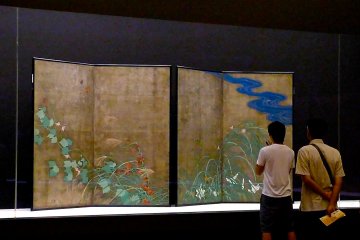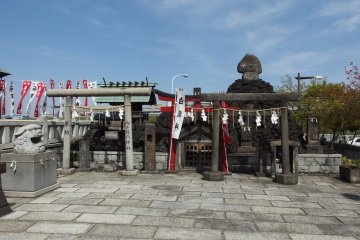Going back almost 1300 years, Ishihama Shrine was established under orders from Emperor Shomu in the eighth century. The shrine is dedicated to the deity of longevity, Jurojin, one the seven deities of good fortune.
A branch of the main Ise Grand Shrine all the way west in Mie Prefecture, by the time of the Edo Period, Ishihama Shrine had become a major centre of worship for the eight provinces that then made up the Kanto region. In those days, the shrine was in what would be called an auspicious location, surrounded as it was by the sacred appeal of Mt. Fuji in the west and Mt. Tsukuba in the north.

In the 1980s, the shrine was relocated its present site to make way for an upgrade of the banks of Sumida River. The spiritual aesthetics of its original location been replaced by Tokyo Gas company gas holders standing right beside it. Not exactly an appealing sight, to be sure, but the shrine itself remains fascinating and with an absence of tall buildings in the area and the expanse of the Sumida River flowing right by, Ishihama Shrine comes across as quite spacious.

There are two main torii gates leading into the complex, some fiery looking komainu and a kaguraden stage from which traditional music is played during festivals and ceremonies. A fascinating sight is the fujizaka, a relic from a Mt. Fuji cult that began in the Edo Period. A mound of rocks sourced form the base of Mt. Fuji, fujizaka are dedicated to the famous mountain where it is believed that ascending a fujizaka is the spiritual equivalent to that of the real Mt. Fuji.

With its curious location and features, Ishihama Shrine is one of the more interesting shrines in Arakawa City and well worth a visit.










